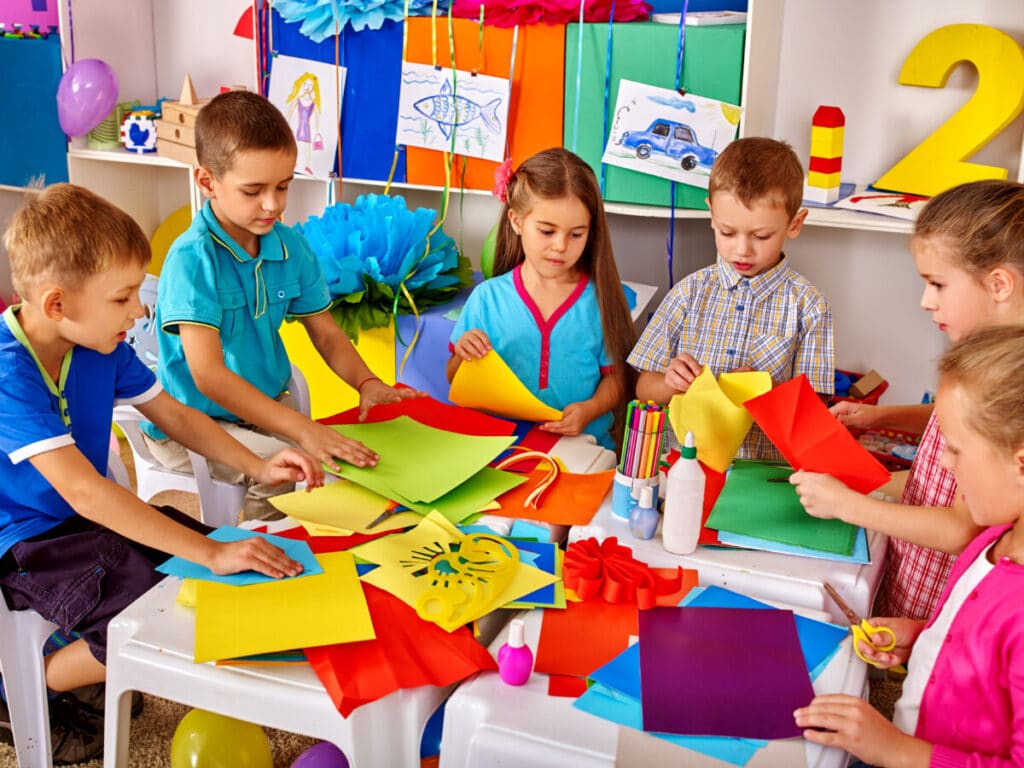Why so Many Schools are Moving to Full-Day Kindergarten
So, you’ve heard that many schools are making the switch to full-day or 6-hour kindergarten, but why? What’s the trend that we’re seeing? Is early education becoming more of a popular topic, or is it becoming a necessity for the majority of families?
Kindergarten schools are focusing on doubling the time that children spend in school to relieve parents of childcare responsibilities and allow children to be exposed to more developmental education at an earlier age. Today most parents go to work, leaving childcare to kindergartens and preschools.
If you have a child, or if you’re planning on having children in the future, you may be interested in knowing where they will go to school and what benefits that has on the child in later life. While studies on full-day as compared to half-day kindergarten are pretty dismal, there is some evidence that small changes can be noticed in a child’s performance in early education, especially in kids who need more reinforcement in the classroom.
How was Kindergarten Created?
The idea behind Kindergarten was first invented by a man named Friedrich Wilhelm August Fröbel, a German philosopher and educator. He opened his first Kindergarten in 1837 in Germany. He was the pioneer of today’s building and learning materials made especially for children.
These first geometrically shaped educational toys are known as Froebel gifts. The box of Froebel gifts would consist of a few spherical, rectangular, and cylindrically shaped wooden toys placed in a box. They were meant to help the children get a grasp on their world by visualizing the world around them by fitting the shapes together.
Froebel was one of the first to train children to their individual needs and encourage learning through fun activities like singing, dance, growing plants, and other arts and crafts like sewing. The lessons he created were geared towards the age range of 3-6 year-olds.
He believed that children were good-natured by heart and that they should be encouraged to have imagination and creative play. Other forms and types of kindergartens later developed as they gained popularity in Europe.
Kindergarten was first introduced to the United States in German-language schools but really caught on after WWI and WWII. The program was meant to help children develop as well as provide a way for both parents to work away from the home. The German name, Kindergarten literally means children’s garden. (Source)
What are the Benefits of Kindergarten?
The ages of children vary from country to country. For instance, in North America, kindergarteners are usually ages 5-6 while in Australia and Great Britain, the ages for kindergarten is just the age before they start official school.
Kindergarten is meant to prepare children for formal schooling by exposing them to a classroom environment and formal education from a young age. It is usually their first experience with a sit-down, focused learning where they can learn to interact with a teacher and other children, and be taught the foundations of education.
Some of the benefits of kindergarten include:
- Kindergarteners can be active in collaborative play with other children.
- They become accustomed to classroom toys and learning materials in various activities.
- Children can participate in decorating the classroom and general creativity.
- Basic reading and math skills are reinforced in fun ways.
- Unstructured play in addition to focused learning helps the child explore and develop.
- In a good kindergarten, the program is developed to cater to each child.
- They learn how to clean up after themselves and be orderly.
As children grow and develop, they need positive reinforcement, and the ability to discover and create. These foundational years help them develop their perceptions and ideas about the world. The theory behind kindergarten is that they will develop better life skills with positive guidance from a teacher. That being said, there are definitely pros and cons between a full 6-hour day and a half-day of kindergarten.

The Literature on Half-Day vs. Whole Day Kindergarten
There is some controversy around the topic of moving kids into a full-day kindergarten when there are so many variables involved with each child and parent’s preferences. Adjusting the length of time children are at school is one that has been brought up time and time again in different states and federal legislatures.
This was done to see if a full day of kindergarten should be available to all families who want it. Some states are trying to hammer out the best policy for children ages 6 and younger to help them succeed in pre-state education programs.
Those who would be for a whole-day kindergarten have pointed out that children who have full-day kindergarten score better in both math and reading tests.
A study done in 2000 showed that the children studied did appear to have more advanced learning, but the higher scores did not stay with them into elementary school and the second grade. The 244 children that had a half-day of kindergarten performed about the same as the 730 students who stayed for a full day of kindergarten after the second grade. So, the idea of higher scores just from kindergarten isn’t exactly perpetual. (Source)
Unfortunately, the recent research on kindergarten and pre-school is not very well investigated. Many of the studies on kindergarten aren’t peer-reviewed and only go up to about 2018. But other, slightly more recent studies do point out that there are benefits to be found in a full day of kindergarten.
Some studies show that it’s really the children in minority groups who don’t have the best access to education within the home that gain the most from all-day preschool, at least in the short run. But, another peer-reviewed study done in 2016 said that “…there is no evidence that preschool or full‐day kindergarten has an impact on future reading scores at the district level.” (Source)
The Pros of Full-Day Kindergarten
Some of the reasons that kindergarten could be extended to an all-day program are to give the children extra practice with games that educators provide and other activities like playing outside. Unstructured free play is extremely necessary for a child’s development.
In fact, many educators and parents would argue that it is key to the child being able to process the world around them at young ages. The younger children are the more they should engage in unstructured play as they are at those ages learning to be creative and explore with their minds.
Having a full day of kindergarten can also let children have more time to gain relevant social skills as they are required to work with other students of their same age throughout activities.
Other benefits would be adding time for a dual-immersion language program. We’ve tried to teach other languages in our higher education programs for years, but these immersion programs have become quite popular in elementary schools in the last few years.
Parents are interested in providing their children the best opportunity to learn another language in this ever-globalizing world we live in. Young children are the best at picking up new languages and behaviors as they are adapting to the world around them.
You may have heard it said that a child who is babbling as they are learning to speak is not just making senseless noise. They are actually able to make any sound from any language in the world, but as they learn to speak just one language, they only focus on that particular language.
This may cause them to lose the ability to pronounce correctly new languages that they learn as they grow older. The goal of such elementary and kindergarten programs is to capture and increase their language skills at an early age when they are more able to learn quickly a new language.
We’ve already talked about the higher test scores, but it does appear to benefit children at an early age to spend more time on their learning as repetition helps reinforce the concepts that they are taught.
Studies have shown that many of these benefits of having full-day kindergarten are seen in disadvantaged and ethnic minorities. Their scores are improved more than their peers of the same backgrounds. They were shown to improve by “0.52 standard deviations” in some groups. (Source)

The Cons of Full-day
While it is true that children appear to benefit in the short term from a whole day of kindergarten with more time to add special education into their programs, it is also true that a full day may not be beneficial for every family. A whole day of kindergarten could be very beneficial for some families with disabled, or otherwise disadvantaged children, and their parents who can spend more time at work.
Some of the downsides to having a full-day kindergarten would be added stress to the child as they spend more time away from home and parents. It shouldn’t be a surprise to anyone that young children are more dependent on their parents or caregivers at young ages and that prolonged separation can be an added stressor for them.
The added time in school can also have the effect of overloading them with academics before children are ready to learn in a classroom setting. Children should be given more liberty to play. Those early years should be focused on play and imagination, and creativity which cannot be taught. They must also be given the freedom they need to learn how to express themselves and learn independently about their world.
Public schools in Finland for example, give their older children a 15-minute break after every 45 minutes of learning. They have some of the highest scores in the world, ranking number 10 in the world in math, science, and reading in 2018. (Source)
The average attention span in adults is about 20 minutes straight, but attention spans for things like lectures should be about 45 minutes. So, two 20-minute spans with 5 minutes of pause or transition.
If you’re in a classroom or learning environment, a 45-minute time period is the best amount of time for trying to maintain the focus of your audience in a lecture situation. So, if adults aren’t even truly able to focus for an hour, why would we make children have to sit still for long periods of time? (Source)
Some other disadvantages of a full-day kindergarten are supplying the resources for a full-day of kindergarten. A full day of school would be more costly, require more teachers, and more utilities. Additional schooling in early age groups requires a higher teacher-to-student ratio.

So, Why do Parents Want Full-Day Kindergarten?
A half-day kindergarten in the past has only been a few hours of the day, maybe 2 or 3 hours. But with a full 6-hour day, that would free up parents to be able to work more without having to worry about childcare.
Although the educational benefits of a full day of kindergarten for the children seem to be a bit more nuanced, it would be a huge benefit for families who do not have either parent in the home during the day. As the trend of parents going to work and single-parent households rise, the demand for cheap childcare goes up with it.
All families are different. They have different desires and preferences for their children’s developmental needs, but states and the federal governments are trying to solve the problem of childcare with proposals for universal kindergarten and subsidies for early education.
The problem is that one solution may not fit all citizen’s needs. Additionally, the extra tax burden for full-day and universal kindergarten will be shouldered by those who do not have kindergarten-aged children.
As outsourcing a child’s education becomes more and more desired it should also be mentioned that expanding kindergarten will require more infrastructure and jobs for educators of young children.
The new, full 6-hour day of kindergarten works well for working parents, but the issue of whether or not to send your child to a full day of kindergarten or not is up to the parent and their personal circumstances.
It is a great option for those who don’t have family nearby and want to know that their child is safe and learning while they are away at work.

